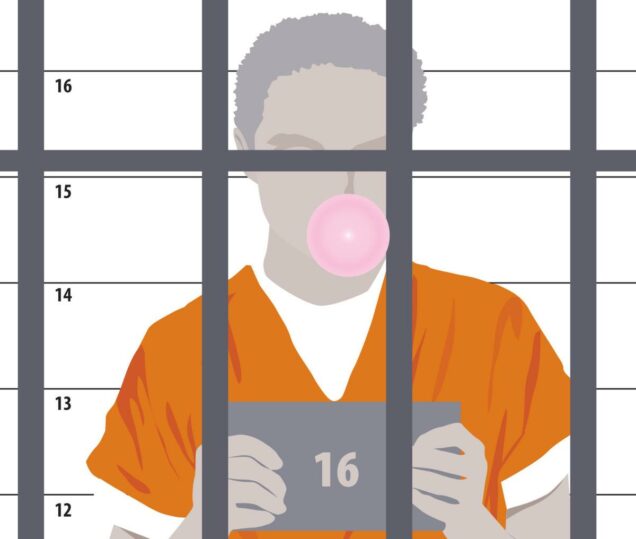The American Family Act is both Effective Policy and Politically Viable, Let’s Make it Law
With the 2020 Democratic Primary underway, candidates are engaged in a ‘race to the left’ defined by progressive proposals for expansive federal programs aimed to combat social, economic, and environmental injustices. Underpinning these ideas is the belief in government as an effective mechanism for improving the lives of Americans and a strong rebuke of the Republican tenants that small government, deregulation, and tax cuts are the appropriate tools to lift up the impoverished, marginalized and economically struggling.
The American Family Act of 2019 (AFA) seems to be another progressive policy with noble aims, but dim prospects for bipartisan support. Most recently introduced in March 2019 by co-sponsors Senator Michael Bennet (D-CO) and Senator Sherrod Brown (D-OH), the AFA aims to reconfigure and expand the Child Tax Credit (CTC) to more effectively combat childhood poverty by increasing the financial support and removing the implicit work requirement. However, upon closer examination of its tax-focused policy structure and pro-family political implications, the AFA is distinct from other progressive Democratic proposals because it has the ability to transcend the traditional divisiveness surrounding social welfare legislation. Thus, if framed correctly and advocated for effectively, the AFA is an endangered species in today’s gridlocked and sharply divided Congress: a sweeping progressive policy with political viability.
 Enacted in 1997, and expanded since with broad bipartisan support, the CTC is an anti-poverty measure that aims to mitigate the costs of raising children through a tax deduction of up to $2,000 per year for each eligible child. The CTC is administered primarily through a non-refundable tax credit, where a family’s income tax liability is reduced by the credit value. Families without taxable income—or whose taxes are below the credit value—are excluded from taking full advantage of the credit. The CTC partially accounts for this with a refundable option for these families. However, eligibility is still subject to a taxable earnings requirement of $2500. Furthermore, refundable credits are capped at 15% of taxable income and $1400 annually. These limitations exclude the poorest and most vulnerable children from the benefit. Roughly 27 million children under seventeen are ineligible for the full credit and many don’t qualify at all. Despite its shortcomings, the CTC functions as an effective tool for alleviating child poverty, lifting one in six previously poor children and their families out of poverty each year.
Enacted in 1997, and expanded since with broad bipartisan support, the CTC is an anti-poverty measure that aims to mitigate the costs of raising children through a tax deduction of up to $2,000 per year for each eligible child. The CTC is administered primarily through a non-refundable tax credit, where a family’s income tax liability is reduced by the credit value. Families without taxable income—or whose taxes are below the credit value—are excluded from taking full advantage of the credit. The CTC partially accounts for this with a refundable option for these families. However, eligibility is still subject to a taxable earnings requirement of $2500. Furthermore, refundable credits are capped at 15% of taxable income and $1400 annually. These limitations exclude the poorest and most vulnerable children from the benefit. Roughly 27 million children under seventeen are ineligible for the full credit and many don’t qualify at all. Despite its shortcomings, the CTC functions as an effective tool for alleviating child poverty, lifting one in six previously poor children and their families out of poverty each year.
Building on the existing CTC, the AFA aims to increase its impact through five major revisions. First, it creates an expanded credit for children under six (YCTC) of $300/month ($3,600/year). Second, the AFA increases the credit for children seven though sixteen to $250/month ($3,000/year). Third, the AFA returns the upper income eligibility to pre-Trump tax levels, with phase-out beginning at $75,000 for single and $110,000 for married families. This concentrates the benefit on the poor and increasingly strapped middle-class. Fourth, and most importantly for reducing rates of childhood poverty, both credits are fully refundable, eliminating the implicit work requirement. Finally, the AFA introduces a monthly advance to “smooth families’ incomes and spending levels over the course of a year,” while preserving the fundamental structure as a refundable tax credit.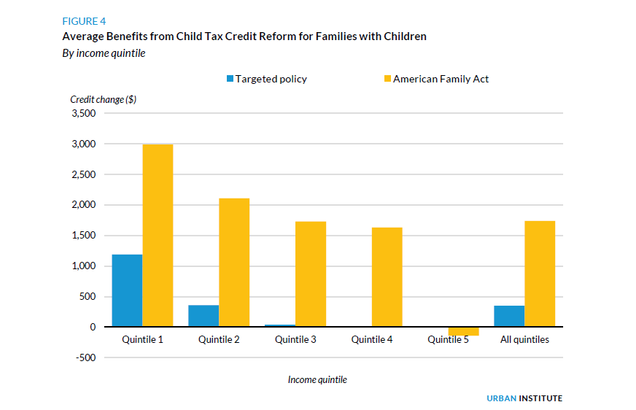
Policy analysts predict the AFA would have powerful and lasting effects on reducing childhood poverty. A report by the Columbia Population Research Center found the AFA would reduce child poverty by 38 percent, and the duel-impact of increasing the credit and eliminating the earnings requirement would move approximately 4 million children out of poverty and 1.6 million out of deep poverty. In 2015 Congress—in a bipartisan action—commissioned a group of experts to produce “a nonpartisan, evidence-based report that would provide its assessment of the most effective means for reducing child poverty by half in the next 10 years.” The report found the most impactful programs involve cash assistance to families, and noted the most effective policy for poverty reduction would be a $2,700 unrestricted child allowance, which the authors report, would alone cut child poverty by a third. Cash subsidies to low income families are also credited for increasing investment in early child development, which links to better learning outcomes and future earning potential. Thus, the AFA implements evidence-based policy for combatting child poverty and promoting broader social and economic benefits for its beneficiaries.
While much of these same benefits could be realized in other progressive policies (such as Universal Basic Income and Universal Childcare), theses government programs require strong Democratic congressional majorities. A closer examination of the political landscape surrounding tax credits and unpaid domestic labor reveals the critical ways the AFA’s form and function can attract Republican support.
To understand the bipartisan potential, we must discuss why many conservatives traditionally support the CTC. Structured fundamentally as a tax credit, the CTC can be framed as a reduction of the federal government. The CTC is more palatable than other anti-poverty initiatives because it bypasses the need for a government program with an expansive bureaucratic administration and a redistributive tax for funding. While this framework is somewhat undermined by the (partially and conditionally) refundable nature, still the CTC addresses the widely supported issue of reducing childhood poverty through an initiative that shrinks the size of the federal government by taking in less tax revenue and not offering a new administrative service. Bennet’s description of the plan demonstrates his awareness of this political tightrope. In the AFA announcement he described it as a tax cut and credit, not a benefit or allowance. When questioned on his word choice he told reporters “I think you could describe it either way.”
Republicans can also frame the CTC and the AFA expansion as pro-family. Conservatives often decry the traditional family structure is under assault and argue programs like the childcare tax credit and proposals like universal childcare structurally nudge stay-at-home parents into the workforce by discounting their unpaid domestic labor. The AFA expansion gives parity in treatment of working and stay-at-home parents. The AFA’s significant credit increase could be framed as offering a simplified and neutrally applied childcare subsidy in lieu of other universal childcare proposals, which commentators on both sides of the debate have described as disadvantaging stay-at-home parents. The Niskanen Center, a center-right think tank, supports expanding the CTC in much the same way the AFA does. It argues the increased credit should unite the left and right through its anti-poverty, pro-family message and impact. It asserts that neutral funds promote individual choice by giving parents the decision-making power to use funds to “help pay for child care for two-parent working families, or help a stay-at-home parent or a grandparent afford necessities such as diapers, transportation, access to the Internet, or educational materials for a child.” The Niskanen Center is not alone on the political right. During his campaign, Donald Trump’s Childcare Plan included a neutrally applied childcare deduction, “offering compensation for the job [stay-at-home parents are] already doing, and allowing them to choose the child care scenario that’s in their best interest.” Further demonstrating the bipartisan nature of the fundamental concept and policy, Trump’s December 2017 tax plan expanded the annual CTC credit from $1000-$2000 dollars and modestly lowered the taxable income requirement.
The AFA should pass because it is good data-backed policy, but unfortunately that is not enough. It is the policy’s structure rooted in the tax code, implications supporting stay-at-home-parents, and foundation in a popular bipartisan program that give the AFA an opportunity transcend partisan gridlock and pass through congress.
 Rebecca Gottesdiener anticipates graduating from Boston University School of Law in May 2020.
Rebecca Gottesdiener anticipates graduating from Boston University School of Law in May 2020.
Dying for a Greener Tomorrow: Legalizing Alkaline Hydrolysis
From the first intentional Neanderthal burials to Polish vampire burials and Himalayan sky burials, burial practices have long been and continue to be a large part of our cultural understanding of death and the afterlife. Today’s growing concerns with land and natural resource sustainability as well as global climate change, people look towards ways to slash their carbon footprints upon death. One emerging alternative to traditional cremation is alkaline hydrolysis (also known as resomation and biocremation).
Greater than half of the US population choose conventional modern burials upon death, which includes being filled with embalming fluid, a known carcinogen, being placed into a casket composed of imported tropical hardwoods, and buried inside a concrete-lined grave. In total, conventional burials account for “4.3 million gallons embalming fluid, 827,060 gallons of which is formaldehyde, methanol, benzene, 20 million board feet of hardwoods, including rainforest woods, 1.6 million tons of concrete, 17,000 tons of copper and bronze, 64,500 tons of steel, and [c]askets and vaults leaching iron, copper, lead, zinc, cobalt” yearly in the US. The wood alone could potentially build millions of homes. Moreover, cemetery landscapers often overwater and over fertilize these spaces to keep their green appearance. On top of these environmental effects, America is running out of space for the deceased, particularly urban centers which cannot keep pace with population growth. All of this accounts for 230 pounds of carbon footprint per traditional burial, equivalent to the average American’s three month carbon output.
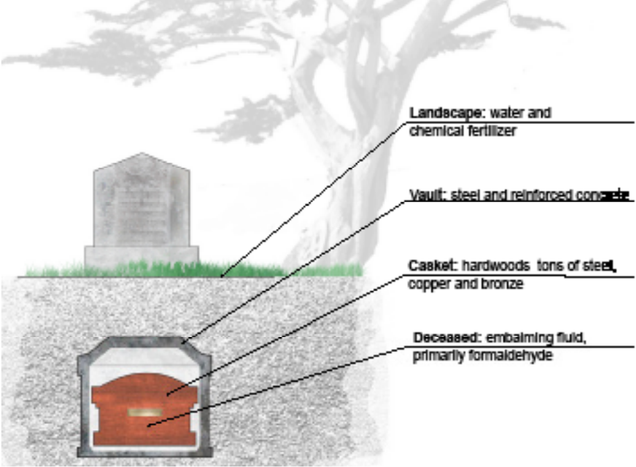 Figure 1. Alexandra Harker, through the Berkeley Planning Journal, illustrated the resource intensity of conventional modern burials.
Figure 1. Alexandra Harker, through the Berkeley Planning Journal, illustrated the resource intensity of conventional modern burials.
Traditional flame-based cremations, often thought of as a greener alternative, “uses 92 cubic [meters] of natural gas, releases 0.8 to 5.9 grams of mercury, and is equal to an [500 mile] car trip.” Interestingly enough, mercury dental fillings are one of the greatest concerns attributed to cremation. According to the Cremation Association of North America (CANA), “primary reasons for choosing cremation are; to save money (30%); because it is simpler, less emotional and more convenient (14%); and to save land (13%).” “The most recent figures from 2003 show that the U.S. cremation rate was 28% (700,000 cremations). Based upon increases in acceptance over the past five-year average, the . . . (CANA) has forecast a national cremation rate of 43% by 2025 with over 1.4 million cremations taking place.” Thus, finding a cost-efficient alternative might be the nation’s best bet towards a greener alternative to traditional burial and cremation practices.
Alkaline hydrolysis reduces human remains down to bone fragments, just like the flame-based equivalent, but does so through a water-based dissolution. CANA first defined alkaline hydrolysis in 2010 as “a water-based dissolution process which uses alkaline chemicals, heat, agitation, and pressure to accelerate natural decomposition.” The removal and storage process are similar in both cremation processes, but alkaline hydrolysis provides the added benefit of allowing pacemakers and other implants in place throughout the water-based dissolution unless required by state law. However, the process of reducing the human remains through cremation is distinctly different between the two processes.
“Alkaline hydrolysis uses water, alkaline chemicals, heat, and sometimes pressure and agitation, to accelerate natural decomposition, leaving bone fragments and a neutral liquid called effluent. The decomposition that occurs in alkaline hydrolysis is the same as that which occurs during burial, just sped up dramatically by the chemicals. The effluent is sterile, and contains salts, sugars, amino acids and peptides. There is no tissue and no DNA left after the process completes. This effluent is discharged with all other wastewater, and is a welcome addition to the water systems.”
The process requires unique equipment and training, but the end result is a reduced carbon footprint. After the three to thirteen hour process of moderate heat, pressure, and agitation, the by-products are released in the water as opposed to traditional cremation which releases carbon dioxide and water vapor into the air. The water-soluble by-products include salts and amino acids, which the CANA suggests is “far cleaner than most wastewater.”
“The sterile liquid is released via a drain to the local wastewater treatment authority in accordance with federal, state or provincial, and local laws. The pH of the water is brought up to at least 11 before it is discharged. Because of the contents of the effluent, water treatment authorities generally like having the water come into the system because it helps clean the water as it flows back to the treatment plant. In some cases, the water is diverted and used for fertilizer because of the potassium and sodium content.”
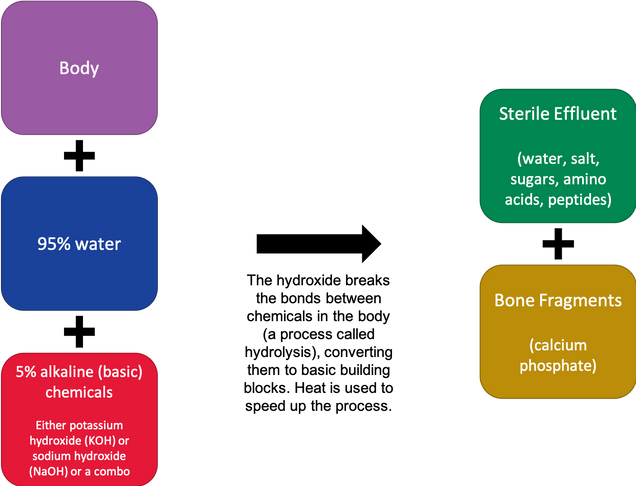 Figure 2. CANA’s Board of Directors expanded the definition of cremation to include alkaline hydrolysis, mainly because the process and results were similar to traditional flame-based cremation.
Figure 2. CANA’s Board of Directors expanded the definition of cremation to include alkaline hydrolysis, mainly because the process and results were similar to traditional flame-based cremation.
First introduced in 1888 by the farming industry for creating fertilizers from farm animal remains, the process first hit the funerary market in 2011. Today, there are twenty states and three Canadian provinces legalizing the process through legislation. Using U.S. Census Bureau July 2018 data, the twenty states’ population totals over 151.5 million citizens, which accounts for 46.3 percent of the American population. Regardless of the legalization of alkaline hydrolysis, access is today’s constraint. The legalization of the process is the first step towards the wide-spread use of alkaline hydrolysis. Once the processes are available, the price point is in line with traditional cremation services. Anderson-McQueen Funeral Homes lists the transportation, handling, and other fees associated with both cremation processes at approximately $3,000.
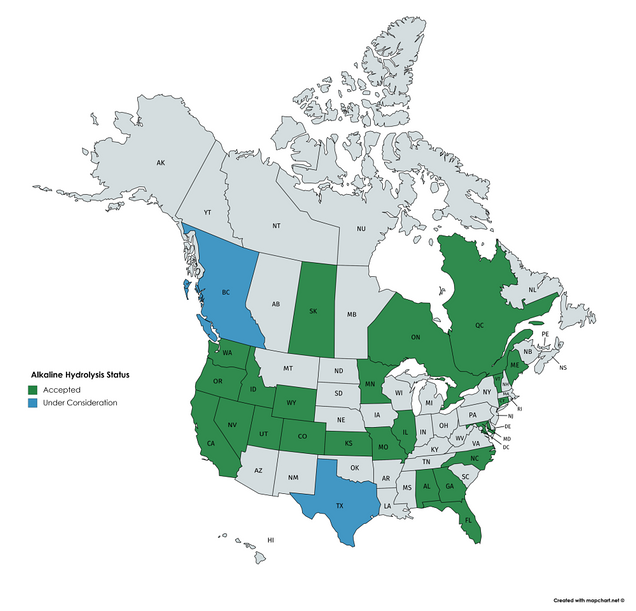 Figure 3. CANA keeps an up-to-date map reflecting alkaline hydrolysis regulatory changes.
Figure 3. CANA keeps an up-to-date map reflecting alkaline hydrolysis regulatory changes.
Once the wide-spread legalization of the process occurs, the public will likely push for greater access to greener cremation practices. It will be interesting to see if and when the process begins in Massachusetts and the remaining 30 states. In any case, the science shows that the massive carbon footprint that traditional burials and cremation services causes.
Tyler Heneghan anticipates graduating from Boston University School of Law in May 2021.
Raise the Age: An Evidence-Based Approach to Juvenile Justice Reform
For a large portion of America’s youth, the 1990s marked the end of juvenile justice. Blinded by fear and captivated by rumors of a “superpredator” uprising, legislatures across the country decided to “Get Tough” on crime. This meant decreasing rehabilitation efforts, increasing punitive repercussions and transferring increasing numbers of youth to adult criminal courts and adult correctional facilities. In effect, “Get Tough” legislation has lowered the legal age of criminal responsibility.
Just under 15,000 individuals under the age of 18 were held in adult jails and state prisons during the 1990s. As crime rates decreased and the “superpredator” hysteria waned, that number decreased sharply, but there are still upwards of 4,000 juveniles being held in adult jails and prisons as of 2018. As well, Emerging Adults, individuals 18–25 years of age, are held responsibility for a disproportionate amount of criminal activity in the United States. Making up only 10% of the total population, Emerging Adults account for almost 30% of criminal arrests and 21% of the adult prison population.
There is little dispute that America’s youth is being held legally responsible for a disturbing amount of crime. The question facing legislatures today is to what extent are these individuals actually culpable for their crimes and whether the adult justice system is the appropriate forum for addressing that culpability.
“Get Tough” Approach
The “Get Tough” movement was largely founded on the premise of the now debunked theory of the “superpredator” promulgated by social and political scientists in the early 1990s. In 1996, Princeton Professor and Criminologist John J. DiIulio Jr. co-authored a book on “the war on crime and drugs”, writing:
[A] new generation of street criminals is upon us -- the youngest, biggest and baddest generation any society has ever known.
America is now home to thickening ranks of juvenile 'superpredators' -- radically impulsive, brutally remorseless youngsters, including ever more preteenage boys, who murder, assault, rape, rob, burglarize, deal deadly drugs, join gun-toting gangs and create serious communal disorders.'
Given that “[the] superpredator is a young juvenile criminal who is so impulsive, so remorseless, that he can kill, rape, maim, without giving it a second thought,” the logical solution to the impending “hordes of depraved teenagers” was imprisonment. Juveniles without a conscience were considered incapable of rehabilitation, and lawmakers were pushed to focus on the punishment and prevention of youth crime.
Scientific & Constitutional Review of “Get Tough”
Support for increased and prolonged incarceration relies heavily on the theory that severe punishment will deter crime. The threat of incarceration is thought to deter the general public from acting reckless or dangerous, while punishment “chastens” the individual to deter future criminal behavior. But both general deterrence and the “chastening effect” fall short of achieving their goals.
General Deterrence
In 2005, the Supreme Court began crediting scientific advances in adolescent neuro-psychology and proscribed the use of capital punishment and mandatory life without parole sentences for juveniles. In Roper v. Simmons, Justice Kennedy opined:
[A] lack of maturity and an underdeveloped sense of responsibility are found in youth more often than in adults and are more understandable among the young. These qualities often result in impetuous and ill-considered actions and decision
Once the diminished culpability of juveniles is recognized, it is evident that the penological justifications for the death penalty apply to them with lesser force than to adults. We have held there are two distinct social purposes served by the death penalty: “ ‘retribution and deterrence of capital crimes by prospective offenders.’ ” Atkins, 536 U. S., at 319 (quoting Gregg v. Georgia, 428 U. S. 153, 183 (1976)
[T]he absence of evidence of deterrent effect is of special concern because the same characteristics that render juveniles less culpable than adults suggest as well that juveniles will be less susceptible to deterrence. In particular, as the plurality observed in Thompson, “[t]he likelihood that the teenage offender has made the kind of cost-benefit analysis that attaches any weight to the possibility of execution is so remote as to be virtually nonexistent.” 487 U. S., at 837.
For general deterrence to be effective, a juvenile must be capable of rationally assessing their actions before they act. As Justice Kennedy noted when he declared juveniles ineligible for the death penalty, juveniles act impulsively and irrationally. Therefore, the threat of prosecution in criminal court is unlikely to deter juveniles from criminal action.
The Chastening Effect
The chastening effect follows the age-old notion that punishment teaches a lesson. The idea that delinquent youth must be taught a lesson was abundant during the “superpredator” scare of the 1990s. The problem is, the evidence does not support that theory. In fact, the evidence suggests the contrary. Youth in the adult criminal justice system are more likely to re-offend upon release.
A Juvenile Recidivism Study in Vermont that compared 16 and 17 year old offenders charged with similar offenses in the juvenile and adult courts. The study found “[t]he three-year recidivism rate for juveniles adjudicated in the Family Division was 25%, compared to a 47% three-year recidivism rate for juveniles convicted in the Criminal Division.” Recidivism can often be attributed to higher levels of isolation and victimization experienced by you in adult correctional facilities, as well as the criminal culture perpetuated by other inmates.
Furthermore, recent studies have found that “the criminal justice system — and the accompanying violence, stress and isolation [ ] that come with being incarcerated — can interfere with brain development in adolescents and children.” A Harvard study on emerging adults concluded:
Higher recidivism rates among emerging adults are not surprising. Justice-involved emerging adults have been victims of violent crime and have experienced emotional and physical trauma at a higher rate than any other population. Exposure to toxic environments such as adult jails and prisons further traumatizes justice involved emerging adults, making them more vulnerable to negative influence, and as a result, increases recidivism among this group. Tailoring the justice system’s response to emerging adults’ developmental needs can reverse this cycle of crime and improve public safety.
“Diminished Culpability”
The Supreme Court has established precedent for amending existing law to meet the “evolving standards of decency,” and decency requires legislatures to re-evaluate the age of criminal responsibility.
The Brain
Much of the research cited by the Supreme Court back in the early 2000s found that those traits the Court ruled “diminished culpability” are present even in late adolescence (age 17, 18, and 19). However, as of January 11, 2019, 17 states still prosecute adolescence age 17, 18, and 19 as adults. An additional 5 states allow the prosecution of juveniles as young as 16 in adult court.
Recent advances in developmental brain science has shown that the human brain is still developing well in to their 20s. The well established consensus in the scientific community is that the brain functioning of a juvenile is not comparable to that of an adults until at least age 25. Particularly relevant to diminished culpability is the continuing development of the prefrontal lobe. The prefrontal lobe is responsible for executive functions such as risk assessment, planning, self-evaluation, goal-setting, and the regulation of our emotions.
Emerging Adults
Psychologist Jeffrey Arnett coined the term “Emerging Adult” in 2000. In the context of criminal justice, emerging adults refers to individuals having attained 18 years of age up to 25 years of age. This age group should be especially important to legislatures because emerging adults have higher rates of incarceration and recidivism. A national study of 30 states revealed that approximately 78% percent of emerging adults released in 2005 were re-arrested within 3 years. Whereas approximately 73% percent of those 25 to 29 and 63% percent of those 40 and older were rearrested within 3 years of release. The study found the pattern held true 5 years after release, and under 30% of those new arrests were violent.
Higher recidivism rates among emerging adults can be attributed Justice-involved emerging adults have been victims of violent crime and have experienced emotional and physical trauma at a higher rate than any other population. Exposure to toxic environments such as adult jails and prisons further traumatizes justiceinvolved emerging adults, making them more vulnerable to negative influence, and as a result, increases recidivism among this group. Tailoring the justice system’s response to emerging adults’ developmental needs can reverse this cycle of crime and improve public safety. Conversely, when emerging adults are provided with age-appropriate programing, the recidivism rate drops dramatically.
Moreover, a large portion of offenders, even violent offenders, age-out of crime. On average, property crimes peak at age 16 and violent crimes at age 17. According to a Justice Policy Institute report,
The evidence is clear that most young people will desist from criminal behavior without intensive justice-system involvement. By better addressing the unique needs and behavior of young adults, justice systems can develop responses that limit the risk youth pose to themselves and others during this transitory life stage.
Raise the Age
The “Raise the Age” campaign advocates for legislation that raises the maximum age of juvenile jurisdiction. Raising that age allows more developmentally underdeveloped individuals to be tried in a juvenile or family court. These courts are considerably more focused on education and rehabilitation that adult criminal courts.
In 2013, Massachusetts raised the age from 17 to 18, and juvenile crime has declined by 34%. Also on the decline in Massachusetts is the number of youth in juvenile facilities. Massachusetts success in raising the age can be attributed to “improving community-based responses and using cost-effective and developmentally appropriate approaches.”
Most states now include 17-year-olds in juvenile jurisdiction, but only one state – Vermont – has raised the age above 18 in conformance with advances in developmental studies of the brain.
Modern science tells us that emerging adults take more risks, have less self-control and are less culpable of their crimes. An evidence-based approach to legislation would demand a re-evaluation of emerging adults in the criminal justice system and the enactment of age-appropriate reforms.
 Melissa Mayfield anticipates graduating from Boston University School of Law in May 2021.
Melissa Mayfield anticipates graduating from Boston University School of Law in May 2021.


